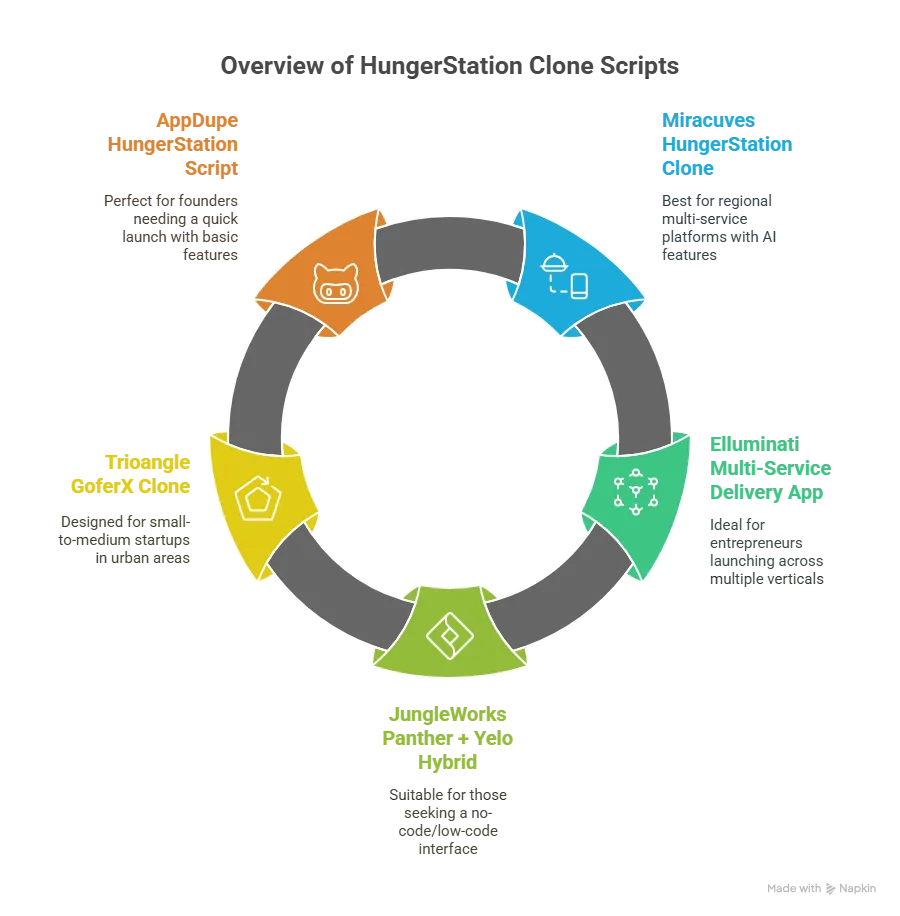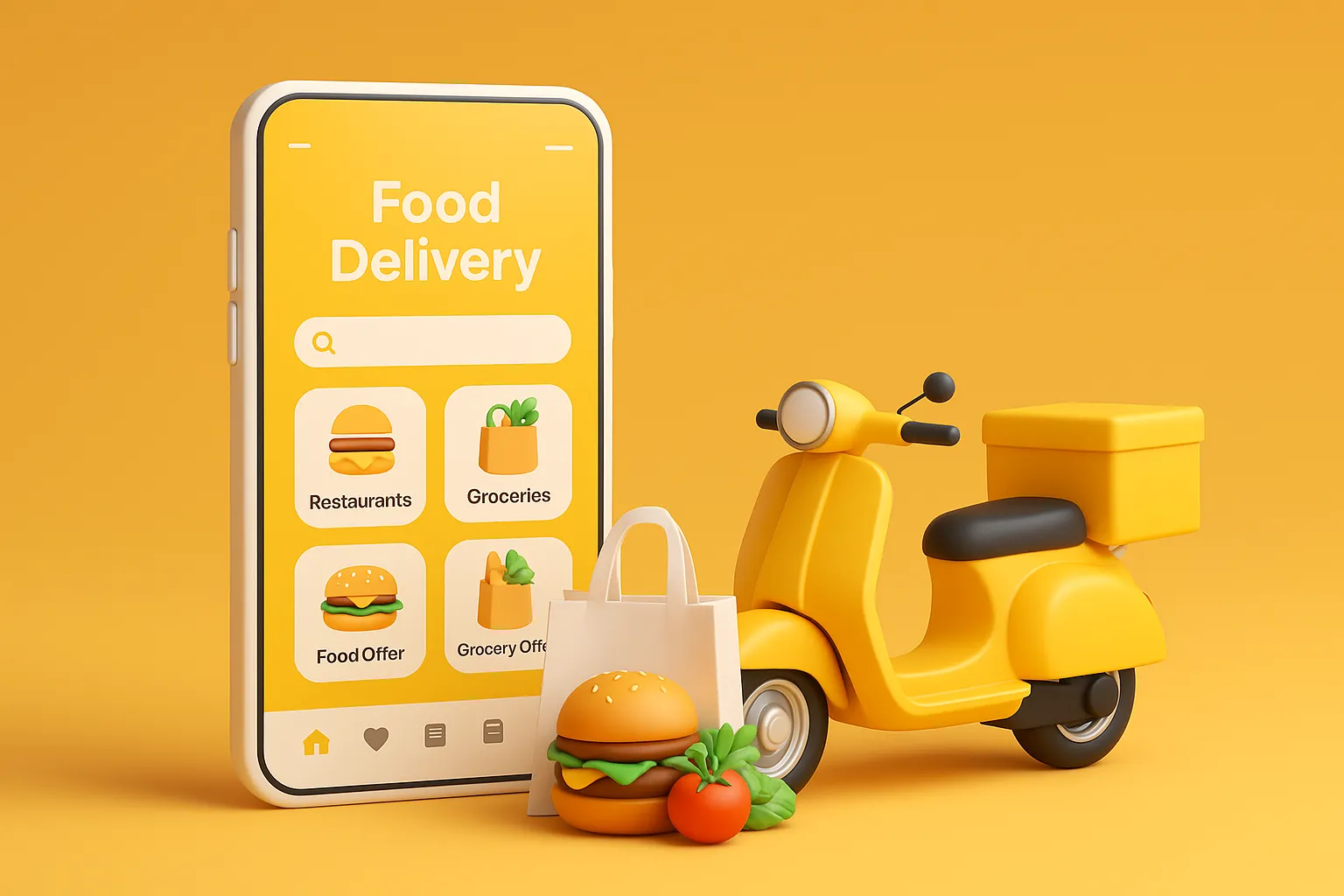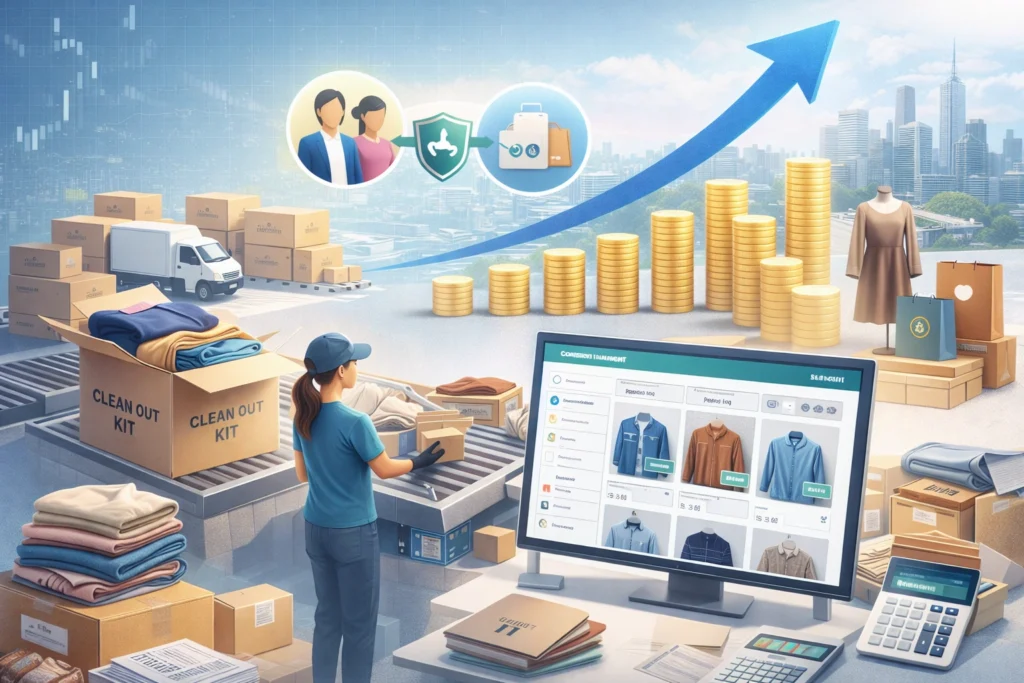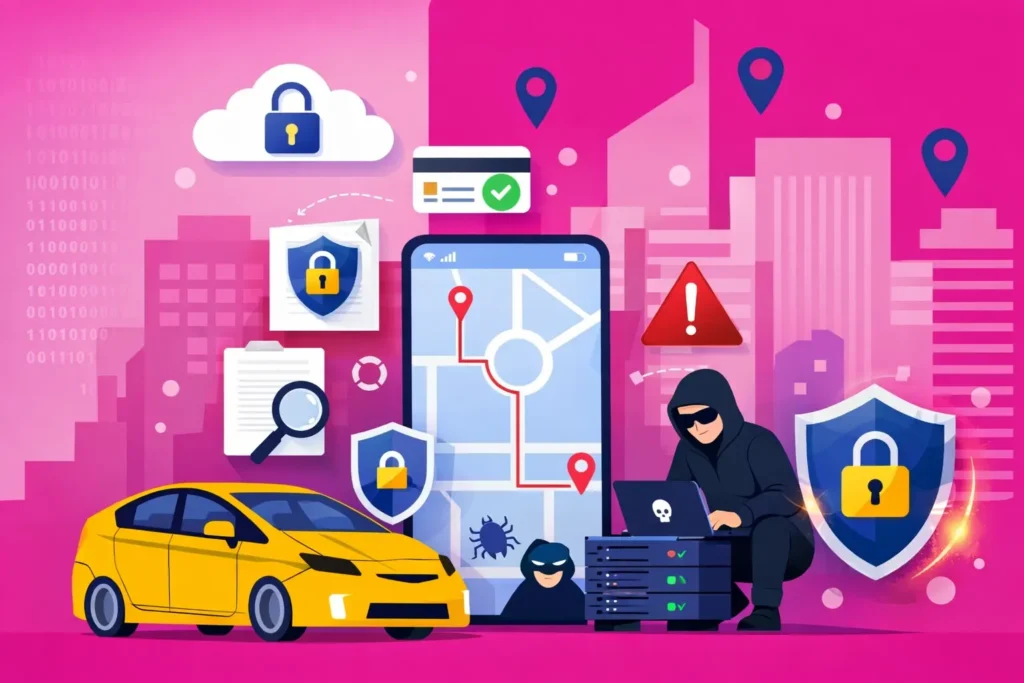A decade ago, ordering food meant calling a restaurant, shouting your address over a noisy line, and praying the delivery guy actually showed up. Now? A few taps, some swipes, and your favorite meal lands on your doorstep in minutes. HungerStation didn’t just ride the delivery wave—it helped shape it, especially in the Middle East. And now, that model is being reimagined by smart founders worldwide.
If you’re eyeing the delivery tech scene in 2025, a HungerStation-style platform offers a golden entry point. Think food, groceries, pharmacy, flowers—yes, even cake on demand. It’s a hybrid that caters to convenience-first consumers across lifestyle categories. And with the right HungerStation clone scripts , you can launch your own multi-category,on-demand delivery app with far less capital and time than you think.
Let’s explore the top clone scripts that replicate and upgrade HungerStation’s model—covering must-have features, pricing plans, and which option suits your startup goals.
What Makes HungerStation a Winning Model?
HungerStation isn’t just another food delivery app. It’s a lifestyle utility. It bridges restaurants, supermarkets, flower shops, and even pharmacies into one frictionless interface—specifically tailored for regional markets.
Here’s what fuels its appeal:
- Multi-vertical support: Food, groceries, and essentials—under one brand.
- Arabic and English UI: Localization is key.
- Scheduled and express delivery: Convenience for all types of users.
- Partner flexibility: Large chains or small vendors? Both fit.
- Personalization: Order history, favorites, promo offers per user.
A proper clone script should reflect this hybrid infrastructure—not just a food-only engine with cosmetic changes.
Read More : HungerStation’s Strategy to Rule Food Delivery
Best HungerStation Clone Scripts for 2025

1. Miracuves HungerStation Clone
Best for: Founders building regionally localized, multi-service platforms.
Core Features:
- Multiple order types: dine-in, takeaway, delivery
- Separate panels: user, delivery agent, merchant, admin
- Arabic RTL support & multi-currency enabled
- AI-based product search & suggestion engine
- Real-time tracking and OTP-based handoffs
Customization: 100% white-label. Access to backend and APIs.
Why it’s a winner: Built with adaptability in mind—works great in the Middle East, South Asia, and Latin America contexts.
2. Elluminati Multi-Service Delivery App
Best for: Entrepreneurs launching across multiple verticals.
Core Features:
- Order & delivery workflow management
- Pharmacy, grocery, and food service templates
- Loyalty rewards, promo codes, and repeat order tracking
- Advanced geo-fencing and area zoning
Customization: High. Includes modular source code.
Tip: Their admin analytics dashboard is powerful for optimizing ops.
3. JungleWorks Panther + Yelo Hybrid
Best for: Those looking for a no-code/low-code interface.
Core Features:
- Multi-store management
- Chat support for merchants and drivers
- Marketing automation tools
- Scheduled and real-time order processing
Customization: SaaS-based. UI tweaks allowed. Limited backend access.
Caution: SaaS model adds long-term cost if you scale quickly.
4. Trioangle GoferX Clone
Best for: Small-to-medium startups in urban areas.
Core Features:
- Driver commission and tip system
- Manual or auto-assign delivery logic
- Store-level availability toggling
- Basic multi-language UI (Arabic included)
Customization: Limited to frontend and delivery logic.
Drawback: More MVP-aligned, not ideal for complex multi-vertical setups.
5. AppDupe HungerStation Script
Best for: Founders who want a quick launch and basic features.
Core Features:
- Food and grocery integration
- Heat map for delivery demand zones
- PWA compatibility
- Contactless delivery flow
Customization: Moderate. Whitelabeling offered.
Watch for: Limited support for pharmacy or non-food modules unless custom-built.
Read More : Complete HungerStation App Feature Guide
Cost Factors & Pricing Breakdown
HungerStation-Like Food Delivery Platform Development — Market Price
| Development Level | Inclusions | Estimated Market Price (USD) |
|---|---|---|
| 1. Basic Food Delivery MVP | Restaurant listings, menu pages, add-to-cart, checkout, basic delivery/pickup selection, simple order tracking, user accounts, and a basic admin panel. | $50,000 |
| 2. Mid-Level Food Delivery Marketplace | Web + mobile UI/UX, multi-restaurant onboarding, real-time order updates, coupons, vendor dashboards, notifications, multiple payment methods, reviews, and analytics. | $120,000 |
| 3. Advanced HungerStation-Level Platform | Multi-city operations, driver module, automated order assignment, zone-based delivery fees, loyalty programs, subscription modules, marketing tools, and enterprise-grade scalability. | $240,000+ |
These values represent global development costs for building a full-scale food delivery ecosystem like HungerStation — including delivery logistics, vendor management, and real-time order workflows.
Miracuves Pricing for a HungerStation-Like Platform
Miracuves Price: $2,899
This includes a complete multi-restaurant food delivery system featuring customer ordering flow, vendor panel, delivery configuration, promotions engine, multi-payment setup, real-time order tracking, and a robust admin backend — fully ready for branding and commercial launch.
Note:
Includes full non-encrypted source code, backend setup, deployment assistance, UI configuration, API integrations, and admin panel setup — ensuring a fully operational HungerStation-style platform ready to scale.
Launch Your HungerStation-Style Delivery Platform — Contact Us Today
Delivery Timeline for a HungerStation-Like Platform with Miracuves
A typical delivery timeline is 3–9 days, depending on:
- Number of restaurants and service regions
- Delivery model (own fleet, third-party, hybrid)
- Monetization setup (commissions, delivery fees, subscriptions)
- UI/UX branding and theme customization
- Localization (tax rules, language, currency)
- Payment gateway and notification integrations
Tech Stack
Developed using PHP, optimized for fast performance, secure transactions, scalable vendor onboarding, robust order workflows, and stable delivery management operations.
Key Factors When Choosing Your HungerStation Clone
Building a “one app for everything” platform sounds sexy, but it’s full of hidden hurdles. Here’s how to avoid the traps:
1. Go multilingual, for real
Your app should support RTL for Arabic, LTR for English, and allow seamless switching. Half-baked language toggles frustrate users fast.
2. Verify multi-service logic
Ensure the script treats food, groceries, and medicine as different flows—not just category tags. Each has its own ordering rules, delivery expectations, and regulation needs.
3. Delivery zone control matters
Geo-fencing helps you localize service, pricing, promotions, and vendor visibility. Make sure your script supports layered zoning.
4. Think beyond delivery
HungerStation also supports pickup and dine-in. If you plan to offer omnichannel experiences, check whether these order types are built-in or need heavy tweaking.
5. Payment diversity is non-negotiable
Cash on delivery, credit card, wallet integrations, and payment gateways like PayTabs or HyperPay should be considered, especially for Middle Eastern markets.
Read More : Reasons startup choose our HungerStation clone over custom development
Conclusion: Serve More Than Just Food
In a world of hyper-convenience, the real winner isn’t just a food delivery app—it’s a lifestyle companion. HungerStation cracked the code by blending food, essentials, and local businesses into one ecosystem. If you’re dreaming of replicating that impact in your city, region, or niche—start with the right technology.
The clone scripts we’ve listed can get you 80% of the way. Your remaining 20%—branding, community, and consistency—is where the magic happens. Just make sure your base is solid.
At Miracuves, we help innovators launch high-performance app clones that are fast, scalable, and monetization-ready. Ready to turn your idea into reality? Let’s build together.
FAQs
Still have questions about HungerStation clone scripts? Let’s clear them up.
Can I build a HungerStation-style app that’s not just for food?
Yes! Many clone scripts support groceries, pharmacies, flowers, and more. Look for multi-service or hyperlocal marketplace capabilities.
How does a HungerStation clone make money?
You can monetize via commissions, delivery fees, paid ads, subscription packages for vendors, or featured listing promotions.
Does every clone script support Arabic?
Not all. Look for explicit RTL (Right-To-Left) support for Arabic UI, and confirm it’s fully integrated in both web and mobile apps.
Can I launch without mobile apps initially?
Yes. Start with a web version (PWA or responsive), then add Android/iOS when you gain traction.
Is it hard to onboard local vendors?
Most top clone scripts offer merchant panels with self-registration, document uploads, and payout setup—streamlining the process.
What are common mistakes in launching a HungerStation-style clone?
Skipping multi-service logic, underestimating delivery logistics, and choosing scripts without proper zoning or Arabic support.
Related Articles
- Best Grubhub Clone Scripts in 2025: Features & Pricing Compared
- Best Chownow Clone Scripts in 2025: Features & Pricing Compared
- Best JustEat Clone Scripts in 2025: Features & Pricing Compared
- Best Swiggy Clone Scripts in 2025: Features & Pricing Compared
- How to Start a Regional Food Delivery Platform Business








